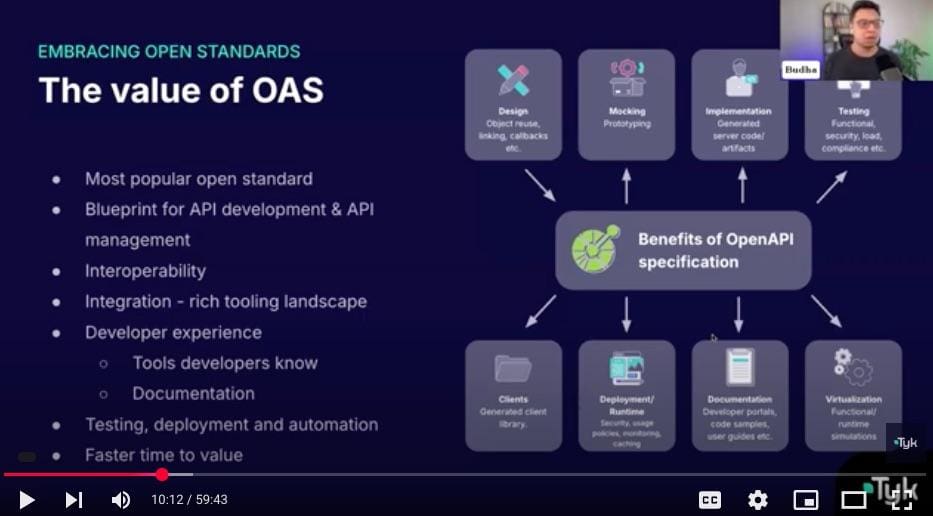With Tyk 5.8, Tyk is now OpenAPI-first, empowering you to use the OpenAPI Specification (OAS) by default for all API definitions. Why is this so important? Read on to find out and discover how you can go OAS-native for secure, interoperable and governance-first API experiences.
What does OAS by default mean?
When we talk about OAS by default, we mean that Tyk has achieved feature parity between Tyk Classic and Tyk OAS. This means that users can configure any feature of Tyk Gateway using the Tyk OAS flow.
We’ve achieved this with Tyk 5.8, as well as providing other important features, including:
- An enhanced onboarding experience for first-time Tyk Cloud users
- The ability to work interchangeably with YAML or JSON formats
- The ability to view user audit logs in Tyk Dashboard
Our reasons for focusing on OAS are many and varied. The most popular open standard, it provides a blueprint for API development and management, delivering multiple benefits. These include interoperability thanks to standardized ways of designing APIs and faster and more seamless integrations, with the tools supporting OpenAPI sharing a common language.
This puts a rich tooling landscape at your fingertips, without the hassle of custom integrations or managing middleware for each different system. This makes a significant difference from an enterprise standpoint, given the range of tools for security, observability and so on that form your API platform and integrated stack.
OAS also delivers developer experience benefits, supporting developers to work with varying tools with ease, as well as making testing and automation more seamless and delivering faster time to value.
Tyk OAS evolved from early access in Tyk 5.3 to feature maturity in Tyk 5.7 and parity in Tyk 5.8. You can now configure every Tyk Gateway capability via Tyk OAS. Tyk also fully supports multi-part OpenAPI descriptions, the enriched generation of OpenAPI docs and – uniquely – the ability to leave your original OpenAPI document untouched. We enable you to build on top of it while maintaining the original integrity of your document, making it easier for you to integrate with other platforms in future.
How do you benefit?
Let’s run through some of the ways you can benefit from Tyk being OAS by default and from the various features related to this.
- API templates: You can use a template (including from an existing API) as a starting point for a new API, pre-filling fields in an API definition to enable faster API creation. From a governance perspective, you can standardize security and other features of your APIs by using these templates.
- Enhanced upstream authentication: Integrate with upstream services secured with Basic Auth, OAuth 2.0 Client Credentials and OAuth 2.0 Password Grant (for legacy upstreams only). This enables you to integrate Tyk securely with third-party services.
- API testing and debugging: Our new, more user-friendly and intuitive testing and debugging experience provides you with greater clarity and insights. View and make changes to your API while keeping the test interface on the screen, without needing Postman.
- Implementing CI/CD pipelines: Our API-first approach, where all capabilities are available via APIs, supports enhanced automation and enables you to integrate seamlessly with your CI/CD pipelines. It’s easy to set up, extensive and works across your integrated stack.
Added to all this is the fact that working with open standards means your APIs will be more accessible to a wider array of AI tools. Open standards improve compatibility with AI agents and MCP servers, enhancing interoperability across your AI ecosystem and ensuring you’re as ready as you can be to face the future.
Migrating to Tyk OAS
We’ve made it easy to migrate to Tyk OAS, with support for Enterprise Edition users via the Tyk Dashboard API and GUI.
If you’re ready to start reaping the rewards of being OAS by default, why not chat to our expert team or dive into the details in Tyk Docs?
Want to see Tyk OAS in action first? Then check out our on-demand webinar for an overview of Tyk 5.8 and a full demo of it in action.
